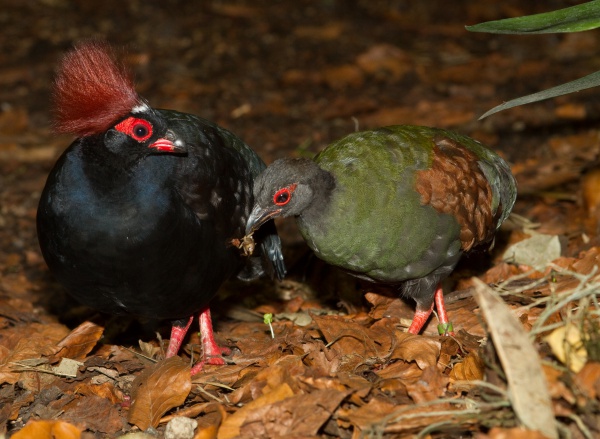Facts About Crested partridge
The crested partridge, also known by several other names such as the crested wood partridge, roul-roul, red-crowned wood partridge, green wood quail, or green wood partridge, belongs to the pheasant family, Phasianidae. Intriguingly, it is the sole member of the genus Rollulus. You can find this small partridge in the lowland rainforests of Southern Burma, Southern Thailand, Malaysia, Sumatra, and Borneo.
These birds nest on the ground and typically lay five or six white eggs, which they incubate for about 18 days. A distinctive feature of the crested partridge is that, unlike other galliform species, both parents feed their young directly from their bills, and the chicks remain in the nest while they are still small.
Adult crested partridges are approximately 25 cm long. The males are particularly striking with their metallic green and glossy dark blue feathers, a red crest, and a scarlet patch around their eyes. In contrast, females have pea-green plumage and a slate-grey head, lacking the crest found in males.
In terms of diet, these birds forage on the forest floor, searching for fruit, seeds, and invertebrates. They are often seen alone or in pairs; when disturbed, they either run or take short flights to safety.
However, habitat destruction, particularly from logging, poses a significant threat to the crested partridge. Despite this, they appear to exhibit some level of adaptability. Currently, the crested wood partridge is listed as Near Threatened on the IUCN Red List and is also included in Appendix III of CITES, highlighting its need for conservation efforts.

 Singapore
Singapore